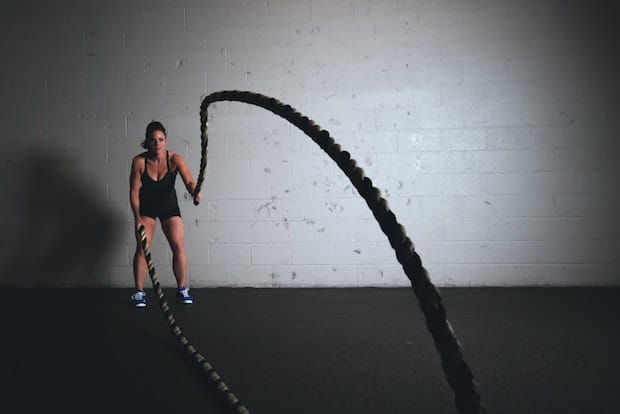Table of Contents
II. Maintaining a Healthy Weight
III. Avoiding Sedentary Periods
Why Do Blood Clots Occur?
Blood clots are very common, affecting around 900,000 Americans yearly. [1] Your body’s clotting factor functions to stop excessive bleeding when there is an open wound. If plaque buildup causes a blood vessel to rupture, an internal blood clot may occur and lead to a medical emergency. [2] Blood clots can be life-threatening. They can lead to heart attack, pulmonary embolism, and deep vein thrombosis. If you are at risk of blood clots, your doctor will likely prescribe blood thinners like Xarelto (rivaroxaban), Eliquis (apixaban), Elmiron (pentosan polysulfate sodium), or Coumadin (warfarin) to reduce your risk of a clotting event.
Maintaining a Healthy Weight
Obesity is a major risk factor for blood clots, especially clots that affect the lungs (pulmonary embolism) and legs (deep vein thrombosis). [3] A study comparing overweight women with women who maintained a healthy weight showed that obese women are much more likely to suffer a blood clot, especially after invasive surgery. [4] The study found that weight and blood clot risk are linearly correlated, meaning even small amounts of weight loss can be beneficial in reducing blood clot risk. [4] Avoiding sedentary periods, living an active life, and eating a nutritious diet are ways you can maintain a healthy weight.
If you exercise regularly and live an active lifestyle, you may think you have a low risk of getting blood clots. But if you sit or stay in the same position often, your risk for blood clots may still be high. A study by the American Heart Association found that extended periods of sitting in one place when watching TV can increase blood clot risk by 1.8 times, even in those who exercised frequently. [5] This highlights the importance of avoiding sedentary periods. If your job requires prolonged periods of sitting, toe raises that get the calves pumping can help with blood flow. Ankle rotations are another great exercise that can be done while sitting at a desk. It is also beneficial to stand up and walk around every 30 minutes, even for just a minute or so. Avoiding sedentary periods is step one. To further reduce your risk for blood clots, it is important to participate in regular physical activity to improve blood circulation. Exercise is essential for combating venous insufficiency, a condition where blood has difficulty flowing back to the heart. Walking, hiking, running, and yoga are all great aerobic exercises that can lower your risk of blood clot complications like deep vein thrombosis and pulmonary embolism. Exercise is a proven way to improve blood clot symptoms. If you aren’t active already, it may be time to dust off the old runners! [6] You have cut down on sedentary periods and started exercising more. What else can you do to reduce your risk? You can tie it all together with a heart-healthy diet! Water is the most important thing to consume because it can act as a natural blood thinner; water can make your platelets less likely to clump together. The amount you should drink depends on pre-existing health conditions and medications you take, so consult your doctor. A healthy diet for blood clot prevention includes plenty of leafy vegetables, fresh fruits, and lean meats. Avoid foods high in fat, like processed foods and fattier meats like beef and pork. Consuming too much fat can lead to high cholesterol, increasing blood vessel rupture and internal blood clot risk. Along with these guidelines, there are some foods that are especially great as natural blood thinners, such as: If you smoke, you are at a higher risk for blood clots than non-smokers. Smoking significantly increases the chance of platelets sticking together. Smoking also damages blood vessel linings in the body. [8] Because smoking tobacco is both a physical and psychological addiction, quitting can be incredibly difficult. Nicotine from smoking can make the brain feel good in the short term, and it is often used as a way of coping with depression, anxiety, and other mental conditions. Quitting smoking can be easier by addressing the root issue. Your doctor can offer ways to make quitting easier, but don’t forget that talking to a psychiatrist can also help address the psychological aspect of your addiction. [9] In as little as one month after quitting, your lung function and circulation will begin to improve. After one year, your risk of blood vessel complications and heart disease decreases by half and will continue to drop after the one-year mark. The earlier you start taking the risk of blood clots seriously, the better chance you have at reducing clotting events. You may not be able to control risk factors like age, inherited genetic risks, or a family history of blood clots. But acting on the factors that you can control can go a long way. Talk to your doctor today to assess your risk for blood clots. The content in this article is intended for informational purposes only. This website does not provide medical advice. In all circumstances, you should always seek the advice of your physician and/or other qualified health professionals(s) for drug, medical condition, or treatment advice. The content provided on this website is not a substitute for professional medical advice, diagnosis, or treatment.
Avoiding Sedentary Periods
Staying Active

Eating a Healthy Diet

Avoid Smoking
